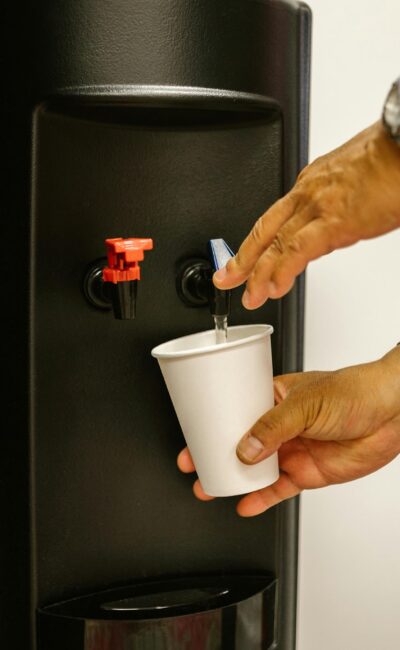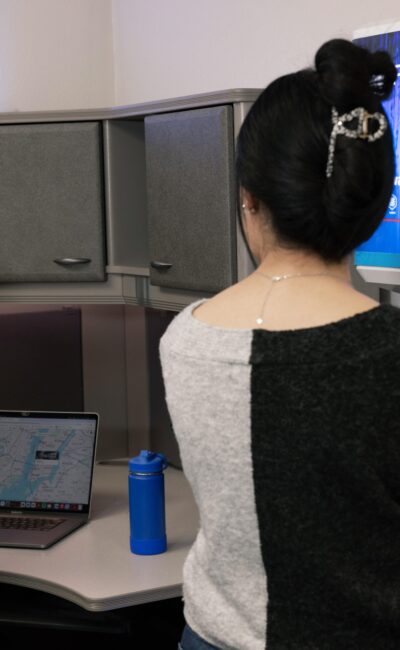Education isn’t the only thing that needs to be regularly improved upon in schools. Classroom safety does too. Though classroom cleanliness has always been a main topic of conversation among school administrators, with the Covid-19 pandemic, the focus on maintenance and new sanitization protocols have gained greater steam.
Maintaining and modernizing building facilities is an ongoing challenge that must always be at the forefront of any school agenda. Part of learning how to improve school facilities involves evaluating innovative technologies that can meet the needs of what students and faculty members require in the present day. Whether it be facilities for student athlete wellness, school lunches, or classroom learning, understanding how to maintain good health for students by means of school facilities and other school programs is important for positive student performance.
Whether it’s receiving aid from the government or local school districts to improve public school facilities, asking community members for facilities funding, or taking on small school construction projects with the help of parent volunteers, improving school facilities for students is crucial to their performance and school safety. When students are taken care of, student engagement and academic performance can improve.
Here are six ways administrators can improve school facilities to uphold safety and sanitation standards, while also providing everyone with an enjoyable learning environment.
1. Improve Indoor Air Quality
Air quality and ventilation are important parts of creating a clean and safe environment for students. As part of the Centers for Disease and Control (CDC) guidelines for cleaning and maintaining healthy facilities, air ventilation tops the list. Proper ventilation systems help minimize airborne virus particles while also providing fresh air circulation to help students stay alert and focused when in class.
Providing clean air is one of the first steps administrators take when making building improvements. Recommended ways for how to improve school facilities include:
- Increasing circulation of outdoor air when possible
- Ensuring HVAC settings are set to maximize ventilation
- Cleaning and/or changing air filters regularly
- Confirming kitchen and restroom exhaust fans are working at optimal levels1
Many administrators are also considering updating their building’s heating and air-conditioning systems to modernized systems. The new technology provides better ventilation and climate control, while also maintaining eco-friendly best practices. Additionally, the use of high-efficiency particulate air (HEPA) fans and filtration systems are part of system updates to enhance air cleaning.2
2. Modernize Temperature Control
Temperature control is another area of improvement administrators can focus on. It ensures each area of the building is set to a comfortable temperature while also reducing energy consumption. Smart technology has made it easier to regulate temperature control appropriate for the environment without having to monitor it classroom by classroom. Furthermore, new heating and air-conditioning units also make less noise and are less disruptive than older thermostats and technology.
Analysis shows the ideal temperature range is between 68 and 74 degrees, although this varies depending on season and region.3 However, it’s a good benchmark to use to help students stay focused. When temperatures are too hot or too cold, it makes it difficult to concentrate. It can also lead to mood changes due to increased discomfort which can also affect a student’s ability and willingness to learn.
3. Update Classroom Design
Classroom design has also changed dramatically over the past couple of years due to the pandemic. Considering the germiest places in school, increased space between seating, use of plastic barriers, and hand-sanitizing stations have all been implemented as part of protecting against the spread of Covid-19. Overcrowded classrooms may be a thing of the past as schools are planning to increase space in classrooms.
Generally speaking, though, classroom setups should promote student learning with multi-purpose areas that can support varying classroom needs. This includes installing the appropriate furniture, such as desks, tables, and cabinets, and providing the room with plenty of ventilation. Classroom design also includes compliance with ADA regulations and making adjustments to aid students still learning remotely from home.
4. Increase Use of Technology
Technology has changed rapidly, especially over the past decade. Students now have access to tablets and laptops they can check out of their school for the year and use for their personal use at home. Technology has allowed for increased communication and opened up doors for new ways of learning i.e. Zoom classes to help support student achievement academically during these unprecedented times.
Though increased use of technology greatly improves the functionality of school facilities, it must be evaluated on a regular basis. Administrators must provide equal accessibility among students with thorough training and adaptability to any new systems. Whether it’s for classroom learning purposes, the investment in technology for an educational institution must continuously be beneficial for all.
5. Focus on Eco-Friendly Updates
Making eco-friendly adjustments are also part of how to improve school buildings for students. Finding ways to save energy and follow sustainable practices at school are a key value for students today. Switching to eco-friendly equipment and sustainable protocols continues to be a way schools are changing their facilities for the better.
One of the biggest ways schools can improve their carbon footprint is by eliminating the use of plastic water bottles. It limits the amount of plastic waste on campus, as well as reduces the amount of waste that ends up in city landfills. In addition to switching to plastic-free alternatives when available, administrators should also install recycling bins around the building.
6. Repair or Replace Infrastructure
Replacing or even repairing a school’s infrastructure is costly, which is often why it gets put on the backburner when budget discussions arise. However, the cost of not repairing or replacing it can do more damage and be more expensive in the long run.
Older school buildings with outdated pipes can leach chemicals, including lead, into the water, which can be harmful to students and staff. Just as it is crucial to remove any form of lead in school drinking water, it’s also important to regularly check for deterioration and keep a record of when updates were last made. Scheduling repairs and regular maintenance also gives administrators an opportunity to use more sustainable materials and decide where to prioritize the maintenance budget in the future.
Ways FloWater Helps Administrators Meet Facility Improvement Demands
The FloWater Touchless Water Dispenser provides school administrators an effective solution to help with all areas of school facility improvement. From the use of eco-friendly technology to dispensing purified water in a contactless way, the Refill Station is a smart investment that offers immediate benefits. Here’s how it helps:
Improves Utility Quality
In addition to air quality, water quality is equally important for student well-being. FloWater immediately elevates the quality of water found in schools. It transforms tap water via an advanced seven-stage filtration and purification process. The result is cool, crisp water free of up to 99% of all contaminants, pollutants, and chemicals. The water is first purified, improvements are added, and then the final filter provides the refreshing finish. The fresh crisp water from our systems can also provide fundraising opportunities in the form of a water bottle fundraiser.
- Purify. In this initial stage, the water is passed through separate filters: Sediment, Carbon, and Advanced Osmosis. The Sediment filter catches and removes dirt, dust, and other solid impurities found in tap water and pipes. The Carbon filter takes care of the smaller particles, as well any unpleasant odors and tastes. And finally, the Advanced Osmosis filter removes the smallest contaminants like viruses, bacteria, pesticides, and other pollutants that affect tap water.
- Improve. After contaminants are filtered out, it’s time to replace some of the minerals that were removed as well. The fourth step is the Activated Oxygen stage which naturally sanitizes the internal tanks and removes impurities. The fifth and sixth steps are the alkaline and electrolytes enhancements. This is where minerals and electrolytes are added back into the water to neutralize acidity in the body and support healthy body functions.
- Finish. Finally, the water is passed through a Coconut Carbon filter made of real coconut husks. It absorbs any lingering contaminants, odors, or tastes to deliver crisp, clean water every time.
Regulates Temperature Control
Delivering cool, crisp water with a delicious taste encourages students to stay hydrated. As modern technology auto-regulates the most comfortable temperature, the FloWater Refill Station automatically chills water to an optimal drinking temperature of 42° every time water is dispensed. Everyone gets the same quality experience whether they’re the first person to fill up for the day or the last.
Innovative Design
The slim design of the Touchless Water Dispenser fits in nicely in any hallway, classroom, cafeteria, or any other high-traffic area when fresh water is needed. The system auto-replenishes and holds seven gallons of purified water at all times. Plus, there’s little to no maintenance required. The internal drain system and powerful drain pump prevent standing water from breeding germs and mold. A hidden catchment tray helps prevent dirt or debris from clogging the drain. There’s also a one-touch refill button and an added foot pedal option that makes the water dispenser a contactless experience to further minimize the spread of germs.
Eco-Friendly Features
The Touchless Water Dispenser is also eco-friendly with energy-saving features, including sleep mode, to keep the system running at low operation costs. It also eliminates the need for single-use plastic bottles. Meanwhile, since the dispensing area holds any water container size, students require fewer fill-ups throughout the day to stay hydrated during classes and sports activities.
Updated School Infrastructure
Set up is handled by one of FloWater’s certified technicians with a customer support team available should there be any problems or questions about the system. Additionally, the majority of customers only require filter changes once a year, saving on costs and scheduling for updates. Furthermore, the Touchless Water Dispenser meets ADA compliance to be used and enjoyed by all.
Essentially, the FloWater Touchless Water Dispenser helps administrators improve their schools’ facilities, addressing several needs at one time. It’s an optimal solution that instantly benefits everyone. Keeping students hydrated is a top priority, and the water dispenser gives equal accessibility in a way that is simple to use and maintain.
When excellent school leaders take care of their students through improved school safety and student health initiatives, academic performance, academic achievement, and student performance will only increase.
Sources:
- Centers for Disease Control and Prevention. Operational Strategy for K-12 Schools through Phased Prevention. https://www.cdc.gov/coronavirus/2019-ncov/community/schools-childcare/operation-strategy.html
- Centers for Disease Control and Prevention. Ventilation in Buildings. https://www.cdc.gov/coronavirus/2019-ncov/community/ventilation.html
- Penn State. The Importance of School Facilities in Student Outcomes. https://sites.psu.edu/ceepa/2015/06/07/the-importance-of-school-facilities-in-improving-student-outcomes/
- Teach for America. School Buildings Were in Trouble Even Before Covid-19. https://www.teachforamerica.org/one-day/policy-and-advocacy/school-buildings-were-in-trouble-even-before-covid-19





